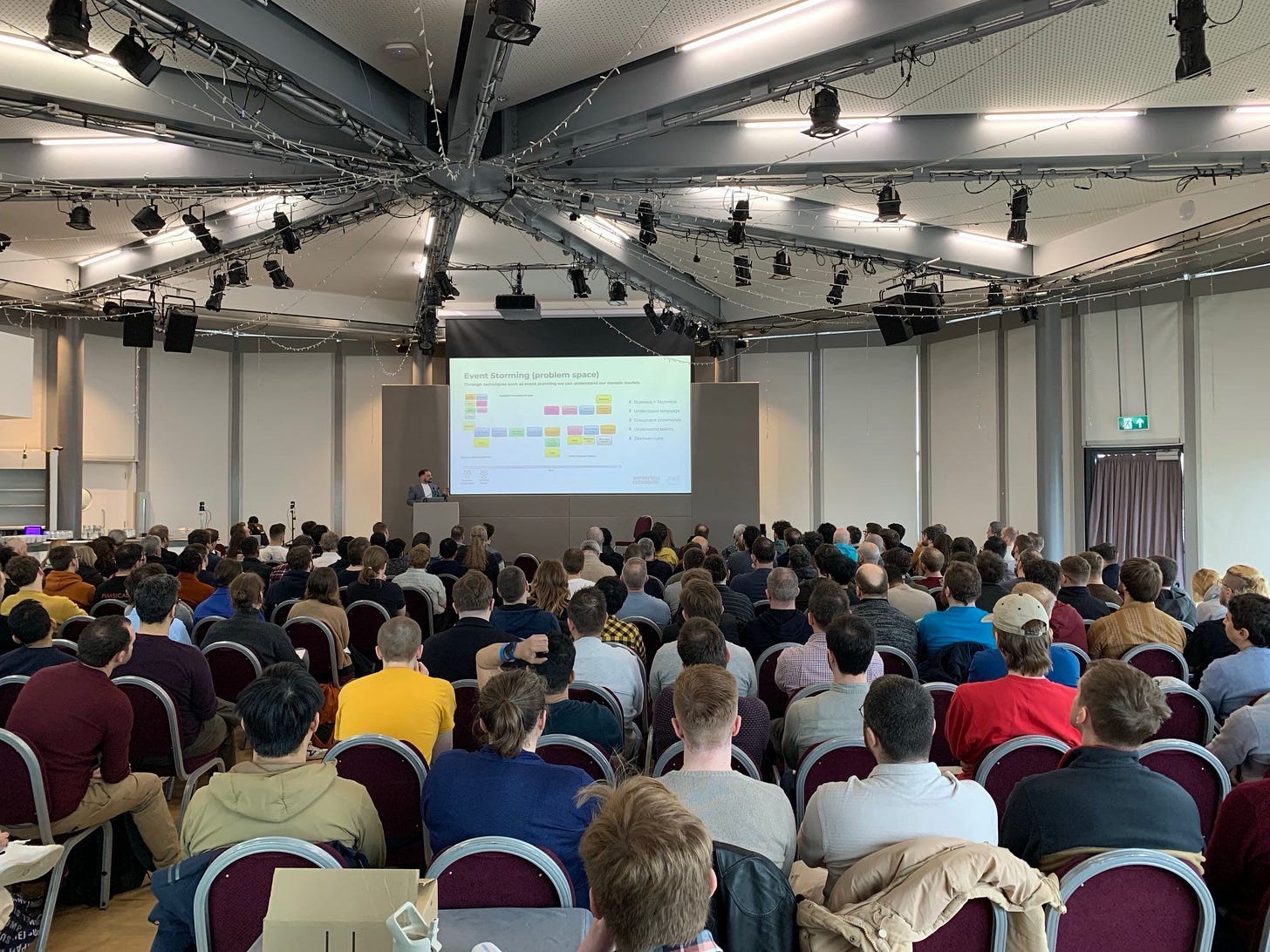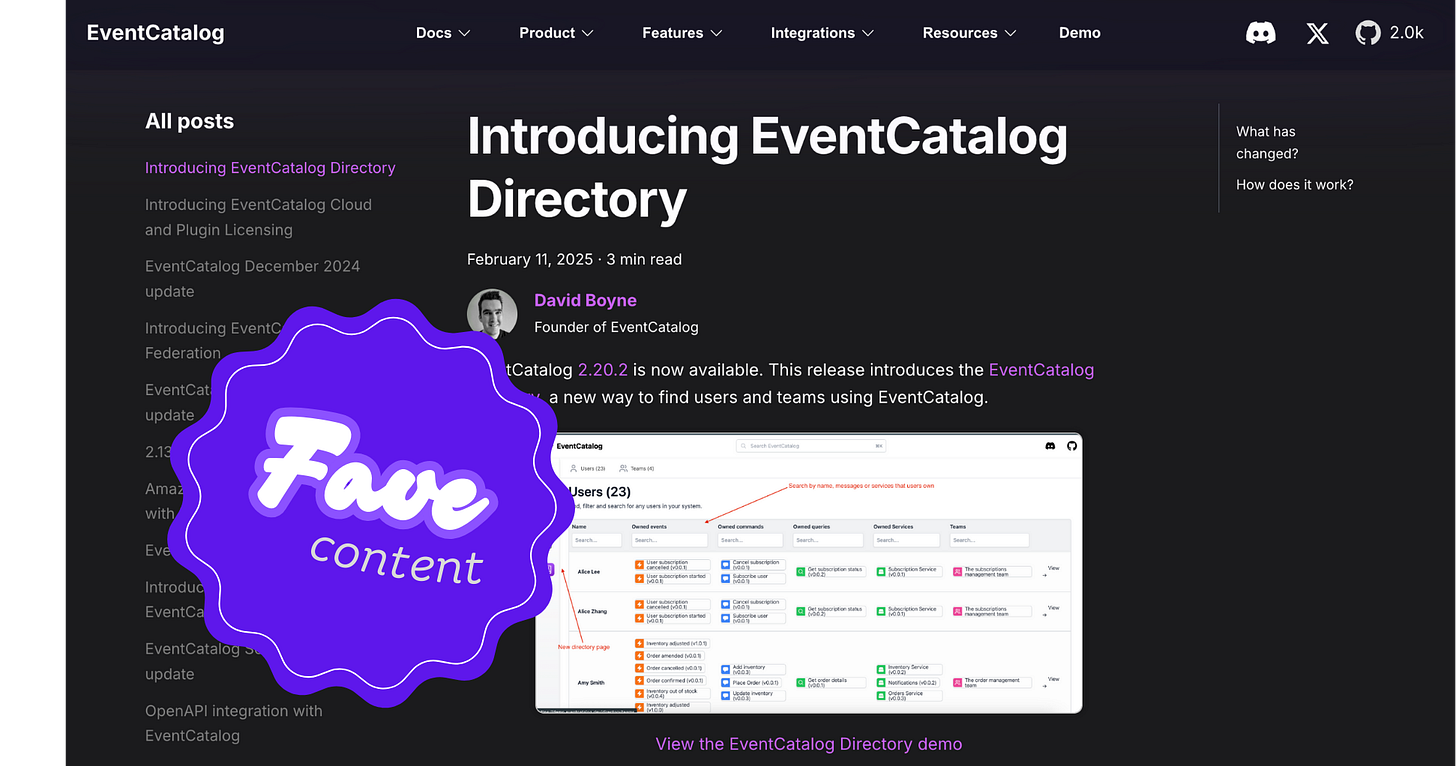#25 Serverless Days Manchester 💬
This week, our expert is AWS Hero Ndimofor (Ro) Ateh Rosius, our spotlight falls on AWS Principal Developer Advocate Gunnar Grosch, we look at the latest AWS service releases, blog posts, & more!
Welcome
In last week’s issue, our serverless expert was AWS Serverless Hero Michael Walmsley, and our spotlight fell on AWS author and educator Tobias Schmidt!
This week, our serverless expert is AWS Serverless Hero Ndimofor (Ro) Ateh Rosius, our spotlight falls on AWS Principal Developer Advocate Gunnar Grosch, we look at the latest AWS service releases, blog posts, hints and tips, news and more!
This week’s newsletter is sponsored by Leighton.
A Glimpse into My Week 🎤
This week, I had the pleasure of talking at Serverless Days Manchester, where I did a talk on the main challenges and questions teams have (in my experience) when working with EDA and microservices on AWS.
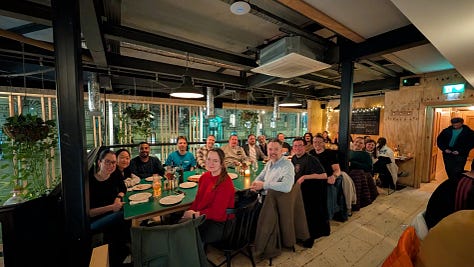
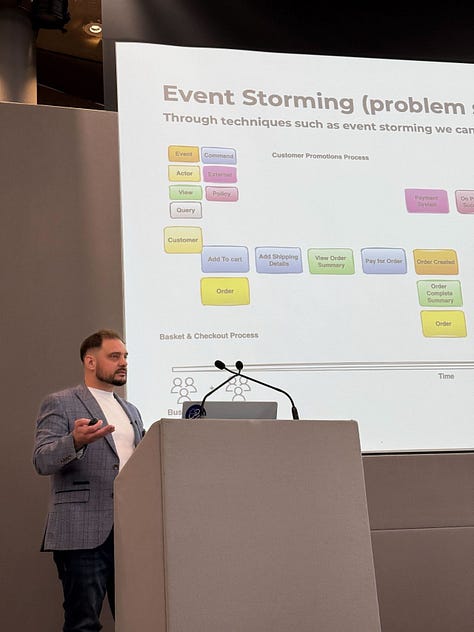
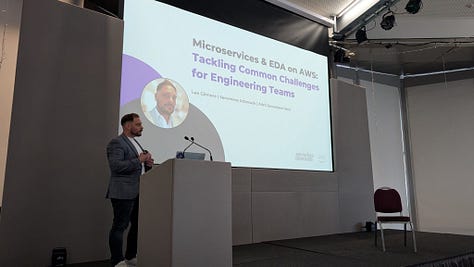
It was a fantastic packed out event, with many great speakers, and the conference was very well managed!
📰 Articles that caught the eye
Here are some of the stand-out articles I read during the week in the World of Serverless.
⭐ My favourite this week was the article by Jimmy Dahlqvist on using Amazon Verified Permissions (AVP) for Policy Enforcement Points (PEPs)!
Jimmy Dahlqvist covers ‘PEP and PDP for Secure Authorization with AVP’.
Anthony Wat discusses Building a Data Ingestion Solution for Amazon Bedrock Knowledge Bases.
Benjamen Pyle covers ‘Momento Token Vending Machine with Rust, Lambda, and Datadog’.
🎓 Ask the Expert
Each week, I ask a different serverless expert the same three questions to get their personal insights - this week, we have AWS Serverless Hero Ndimofor (Ro) Ateh Rosius!
1. What is one common mistake you see teams making when implementing serverless solutions, and how can they avoid it?
Many teams focus heavily on writing business logic but fail to implement proper
observability and tracing mechanisms. This oversight can lead to:
Errors going unnoticed or becoming difficult to diagnose, especially in distributed, event-driven architectures.
Difficulty tracing the flow of events across multiple functions and services, leading to longer resolution times.
Inefficient resource usage due to lack of visibility into performance bottlenecks or inefficiencies, which can result in higher costs and slower response times.
Example Scenario:
Imagine a team building an order processing system using AWS Lambda and SQS.
They focus on implementing the core business logic but fail to:
Add proper logging to track the flow of messages.
Configure a DLQ for failed messages.
Understand that SQS provides at least once delivery, which can result in duplicate messages.
As a result:
Some orders are processed multiple times, leading to data inconsistencies.
Errors in message processing go unnoticed because there’s no DLQ or logging.
The team spends hours debugging issues because they lack visibility into the
system.By instrumenting their application with proper logging, setting up a DLQ, and
educating the team about SQS’s behaviour, they could have avoided these issues.
How to Avoid This Mistake:
Instrument Your Applications:Use structured logging (e.g., JSON format) to capture detailed context about
each function invocation, including inputs, outputs, and errors.Integrate distributed tracing tools like AWS X-Ray, OpenTelemetry, or Datadog to visualise the flow of requests across services.
Implement Observability Early:Treat observability as a first-class citizen in your development process, not an
afterthought.Set up dashboards and alerts for key metrics like invocation counts, error
rates, latency, and throttling.
Educate Your Team:Invest in training and up-skilling team members on serverless best practices.
including:
Understanding the differences between messaging services (e.g., SQS for
at least once delivery vs. EventBridge for exactly once processing).Designing for failure and implementing retries, DLQs, and idempotency.
Encourage knowledge sharing through workshops, documentation, and code reviews.
Test for Failure Scenarios:
Simulate failures (e.g., timeouts, service outages) during testing to ensure
your system can handle them gracefully.Use chaos engineering tools like AWS Fault Injection Simulator to test the
resilience of your serverless architecture.2. Which serverless tool or service are you most excited about right now, and why?
AWS Step functions. It’s just downright amazing, and the AWS Team is doing an
incredible job of keeping it updated while making it better. For example, the
most recent updates have been game changes.
1. Transforming data with JSONata now, using variables, you can assign data in
one state and retrieve it in any subsequent states. You don’t have to pass the
data around as previously done.
Also, with JSONata, an open-source query and transformation language, you now
perform advanced data manipulation and transformation, such as date and time
formatting and mathematical operations.
For example, this little utility function helps you filter, map and join text from AWS Textract output.JSONata now makes it possible to easily run code directly within a step functions workflow without the need for a lambda function.
2. AWS Step Functions now supports 100,000 state machines and activities per AWS account. This update is available in all regions.
Just imagine the level of flexibility and efficiency boost upgrades like these
offer huge teams.3. What is your favourite trick or tip when working with serverless that the readers may find interesting?
When working with AWS SAM, please use SAM Accelerate to enhance and speed up your development process.
If you're building with AWS CDK, don't forget to add the cdk-nag for best practices.
✅ Bonus tip: join the hashtag#believeinsls discord! There is a community there to answer any questions you may have without getting overzealous on serverless or without judgment! Check it out!
🚀 New Releases
Here are the latest releases this week in the AWS World:
⭐ The most interesting for me this week is the Amplify Hosting SSR updates!
Amazon SES now offers tiered pricing for Virtual Deliverability Manager.
AWS CDK releases L2 construct support for Amazon Data Firehose delivery streams.
Amplify Hosting announces support for IAM roles for server-side rendered (SSR) applications.
Announcing AWS DMS Serverless comprehensive premigration assessments.
Amazon Bedrock now available in Asia Pacific (Hyderabad) and Asia Pacific (Osaka) regions.
Amazon ECS increases the CPU limit for ECS tasks to 192 vCPUs.
Amazon Inspector enhances the security engine for container images scanning.
🔥 Tip: Check out https://aws-news.com/ for the very latest up-to-date serverless releases as they happen, created by the talented AWS Serverless Hero Luc van Donkersgoed.
👷🏻 Tools & Frameworks
Check out the latest open-source frameworks, news, and tool updates from the past week.
Effortless PDF Generation in Serverless Environments with serverless-pdf-generator.
SST added the ability to search, view log streams, and made it faster through the console.
Restate 1.2: a distributed durable execution engine, built from first principles.
✖️ Social of the Week
This week’s social is on X/Twitter and comes from SST builder, Dax Raad:
This is a great tweet and shows the power of social media that many people don’t use to their advantage. Imagine sitting at a table with the World’s top experts in any given area, where you can simply reach across and ask them anything you want. That’s a table you are sitting at right now!
My own experiences are that experts, on average, don’t mind the odd question in a DM or tweet if it is well thought out, not a sloppy question, and if you approach it in the right way - and it’s usually why they are on socials in the first place, i.e. to engage and educate others.
🎙️ YouTube & Podcasts
Here are some of my favourite videos and podcasts this week.
⭐ My favourite this week was the video by James Eastham on testing event-driven architectures!
Dheeraj Choudhary discusses how to ‘Host DeepSeek-R1 Locally & Run Your Own AI Chatbot’.
James Eastham covers ‘The Tests You SHOULD Be Writing In Event-Driven Systems’.
How to Add AI Features to Your App Using Modus: A Step-by-Step Tutorial.
Weekly Case Study 🔍
This week’s case study comes from United Airlines. United Airlines is modernising aviation by migrating hundreds of applications to AWS, using services like Amazon Bedrock, AWS IoT Core, and Amazon DocumentDB. This transformation has driven $2 billion in savings, boosted developer productivity by 40%, and streamlined passenger record processing with generative AI.
This week, we also have a great video to watch, which discusses how they use Amazon Bedrock with their legacy mainframe solution:
🗣️ Inspirational Quotes and Thoughts
This week’s inspirational quote comes from educator and creator of Conway's law, Mel Conway:
“Linguistic comment. When a politician greets you with "How are you?" and a nurse greets you with "How are you?" they are totally different questions, even though they sound, and are spelled, the same. What does that say about machine translation?”
- Mel Conway
I love this quote, as it shows that when using techniques like Event Storming, the same words can have very different meanings across parts of a business, much like how "How are you?" differs between a politician and a nurse.
A great example from my previous company is that the name ‘customer’ in your basket and checkout domain may mean a singular customer of the website (a person buying something for their DIY project, for example), yet for an internal department that deals with B2B, a ‘customer’ is a very different thing (another business buying in bulk for multi-million-pound projects perhaps). Always take the time to really understand common language when building systems.
🗳️ Poll of the Week
In last week’s poll, we asked the question, “Is sustainability a key factor in your cloud workload architecture?“, with 60% saying yes, and 40% saying no. This is always an interesting one for me, as we should always strive for sustainability when building and architecting solutions (we do at Leighton), but I also understand when you have tough deadlines, and your back is up against customer deadlines, it is something some people may forget.
This week, we ask the question, “Do you build your serverless architectures using evolutionary architecture?“. Please feel free to add comments:
📅 Serverless Events
The following serverless events are upcoming, so mark your calendars:
AWS Community Day Slovakia - 26th March 2025
AWS Community Day Italy - 2nd April 2025
AWS Community Day Romania - 10th April 2025
AWS Community Day Turkey - 19th April 2025
AWS Community Day Baltic - 10th Sept 2025
Do you have any upcoming events that you want to highlight? Message below!
⭐ Spotlight
This week’s spotlight falls on AWS Principal Developer Advocate Gunnar Grosch!
Gunnar is a former AWS Serverless Hero and technical trainer, who now specialises in building resilient serverless applications and advancing chaos engineering techniques on AWS, and also actively shares his expertise on serverless, DevOps, DevEx, AI and more through global talks, keynote speaking, YouTube and live streams, open-source tools, and community initiatives; including (and not limited too) ServerlessDays, re:Invent recaps, and developer meetups in the Nordics! Not sure how you manage to fit this all in Gunnar, but thank you for everything you do for our fantastic global community!
👋🏼 Wrapping Up
Thank you for reading the latest Serverless Advocate Newsletter!
If you want to find out a little more about me, please have a look at:
https://www.serverlessadvocate.com/
See you next time,
Lee






